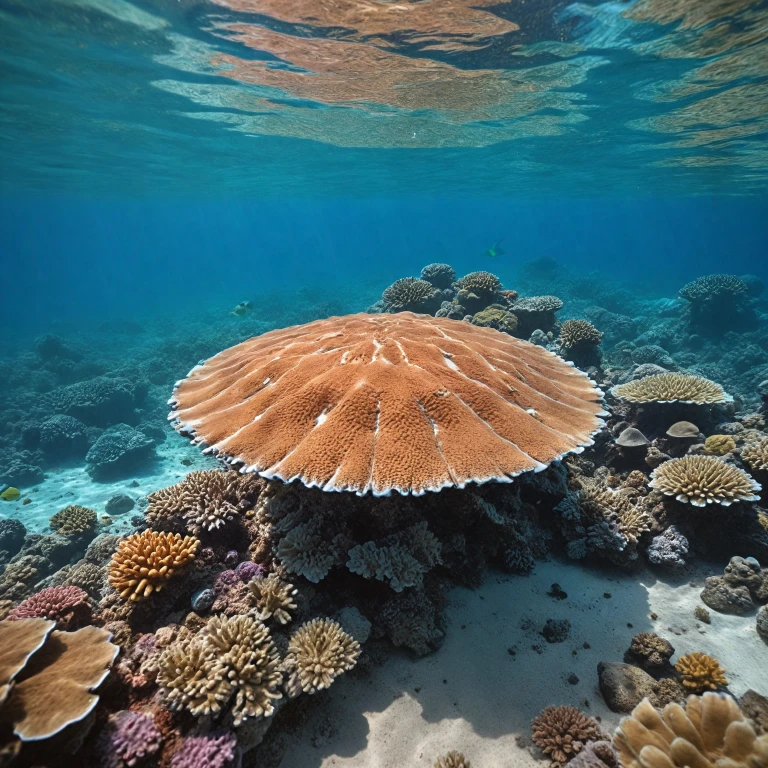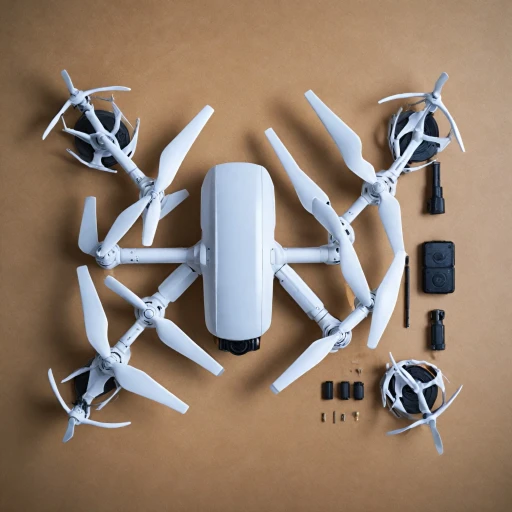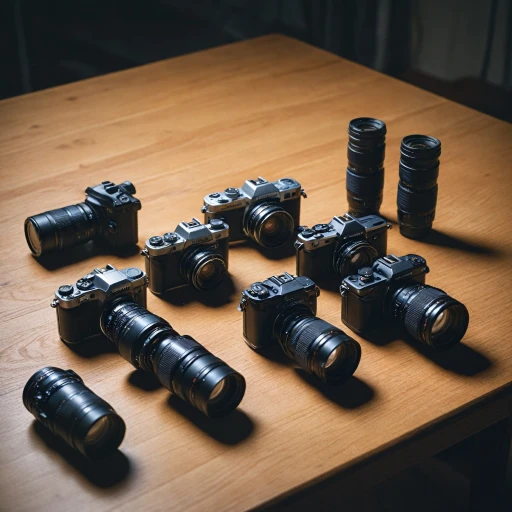
Understanding Underwater Drones with Cameras
Diving into the World of Aquatic Imaging
The world beneath the waves is both mysterious and captivating, and there's no better way to explore it than with an underwater drone equipped with a camera. These high-tech underwater vehicles, often referred to as remotely operated vehicles (ROVs), have advanced significantly, offering those who invest in them a range of features and capabilities that weren't possible a few years ago. With options ranging from entry-class devices to top-tier models, there's a drone for every type of explorer, whether you're a hobbyist or a professional diver.
These underwater drones come in various sizes and capabilities, from compact models like the Chasing Dory to professional-grade options such as the QYSEA FIFISH Pro. Depending on what you need from your aquatic adventures, there are ROVs available at a range of price points, effectively influencing the features you get. For instance, drones in the higher price class might offer superior battery life, greater depth control, and high-quality video capture capabilities, essential for capturing the finest details of the deep.
Importantly, these drones don't function solely on their own. Equipped with technology like LED lights for low-light environments and remote control via a dedicated app or a physical controller, they make it possible for users to adapt to different water conditions. In essence, they are becoming key tools in marine exploration, broadening the horizons of what we can explore and understand underwater.
As these underwater ROVs evolve, future trends hint at improvements in features like live video streaming and enhanced battery performance. Stay tuned to learn about the advancements in underwater imaging, including their applications and the challenges faced with underwater exploration.
Key Features to Consider
Diving into the Essential Characteristics
When considering an underwater drone equipped with a camera, several features set top models apart from the rest. These key elements can influence price, performance, and user experience, making them critical when selecting the right drone for your needs.
- Camera Quality: A high-quality camera capable of capturing detailed video footage is a must for any underwater drone. Models like the QYSEA FIFISH Pro and Chasing Dory offer exceptional video clarity for vibrant underwater shoots. Excellent resolution and the ability to shoot in low light using integrated LED lights are important considerations.
- Maneuverability and Control: Ease of control under the water is vital. Many modern remotely operated vehicles (ROVs) are equipped with sophisticated systems for seamless remote control, allowing for precise navigation in different water conditions. The Chasing Pro and Deep Trekker are known for their superb maneuverability.
- Battery Life: Extended battery life is crucial for prolonged deep-sea explorations, ensuring you capture every moment. A drone with robust battery capabilities can significantly impact the efficiency of your underwater endeavors.
- Durability and Depth Capability: Different classes of underwater drones are built to withstand various pressures, so understanding depth ratings is important. The Gladius Mini and FIFISH Expert are designed to operate effectively under substantial pressures in deep water.
- Size and Portability: Compact ROVs, easily transportable for on-the-go explorations, can enhance flexibility in underwater projects. Smaller models might offer the same advanced technology as their larger counterparts, without compromising on features.
These elements will help you find the drone that aligns with your exploration goals, balancing the pros and cons of each specification. As underwater vehicle technology continues to evolve, these features can change, mirroring the dynamic nature of the field.
For those seeking additional resources on related topics, consider visiting our article on finding the optimal backpack for your camera adventures. This can be particularly helpful for transporting your equipment safely and efficiently.
Applications in Marine Exploration
Expanding Horizons in Ocean Exploration
Underwater drones equipped with cameras have revolutionized marine exploration. These underwater vehicles allow researchers to venture into previously inaccessible depths, providing unprecedented access to the secrets of the ocean. The capabilities afforded by these devices are vast, offering a blend of precision and adaptability. One of the primary applications of an underwater drone involves marine biology studies. With the ability to capture high-resolution video, these drones enable marine biologists to study marine life in its natural habitat without disturbing the ecosystem. For example, the QYSEA FIFISH Pro series is renowned for its precision and clarity, allowing researchers to monitor and record the behaviors of diverse marine species. Underwater drones are also valuable tools in deep-water exploration. Remotely operated vehicles (ROVs) like the deep trekker and gladius mini provide insights into the ocean's depths, aiding in the discovery of new geological formations and understanding the underwater environment better. Industrial applications also benefit from these technological advancements. Underwater drones are used for pipeline inspections, where their maneuverability and equipped LED lights allow operators to identify and assess the condition of underwater infrastructures. The advanced control systems of drones like the Chasing Dory and Chasing Pro ensure detailed inspection without the risk associated with human divers. For hobbyists and enthusiasts, the availability of user-friendly models at various price points makes underwater exploration accessible. Models such as the QYSEA FIFISH offer affordable options for those keen on diving into underwater photography or simply exploring the depths. The enhanced battery life of many of these drones provides extended exploration time, allowing for more comprehensive documentation and video recording of their underwater excursions. For readers interested in related technologies, consider exploring the various options for 35mm film cameras that offer a different kind of photographic adventure by finding the perfect 35mm film camera for your needs.Challenges in Underwater Imaging
Overcoming the Hurdles of Underwater Imaging
Underwater imaging presents unique challenges that set it apart from traditional photography or videography. The combination of water depth, pressure, and lighting significantly affects the quality and feasibility of capturing high-quality images or videos with an underwater drone. Water clarity and light penetration are major concerns when operating underwater vehicles equipped with cameras, such as the Chasing Dory or QYSEA Fifish Pro. Murky waters can obscure vision, while limited natural light at deep levels necessitates the use of powerful LED lights to ensure adequate exposure levels. The deeper an underwater drone goes, the more pressure it faces, which can affect its functionality and durability. Models like Deep Trekker and the Gladius Mini are specifically designed with robust shells and advanced engineering to withstand these challenges, making them excellent options for underwater ROVs operating at significant depths. The control and stability of the ROVs are also crucial. Strong currents and unpredictable underwater conditions can impede navigation, requiring drones with precise remote control capabilities to maintain steady, clear shots. Pro-class drones mitigate this through sophisticated stabilization technologies. Battery life is another critical factor affecting underwater imaging. The longer an underwater drone stays operational, the better its chances of capturing the desired footage. Top models prioritize energy efficiency without compromising their operational effectiveness. Lastly, the sale price of these intricate devices often reflects their capabilities, with high-end models like the QYSEA Fifish or the Chasing Pro offering a balance of advanced features and value, proving essential for deep, comprehensive exploration campaigns.Comparing Popular Models
Evaluating Top Underwater Drone Models
When exploring the underwater drone market, it's important to evaluate the capabilities of models such as the QYSEA Fifish, Gladius Mini, and Deep Trekker. These underwater drones come equipped with cutting-edge technology and features that can greatly enhance underwater imaging and exploration.- QYSEA Fifish: Known for its advanced functionalities, this underwater ROV is equipped with high-resolution cameras and LED lights, making it ideal for capturing vivid underwater video. The Fifish Pro version offers exceptional maneuverability and extended battery life, making it a favorite among professional marine explorers.
- Gladius Mini: This compact underwater drone is favored for its affordability and user-friendly interface. It can dive deep and is equipped with a capable camera, perfect for those just stepping into underwater exploration. Its remote control operation and water resistance make it a versatile choice for hobbyists and professionals alike.
- Deep Trekker: Classed as a top-tier underwater ROV, Deep Trekker stands out with its robust construction and sophisticated control systems. It's particularly popular among commercial users due to its durability and high-performance video capabilities.












